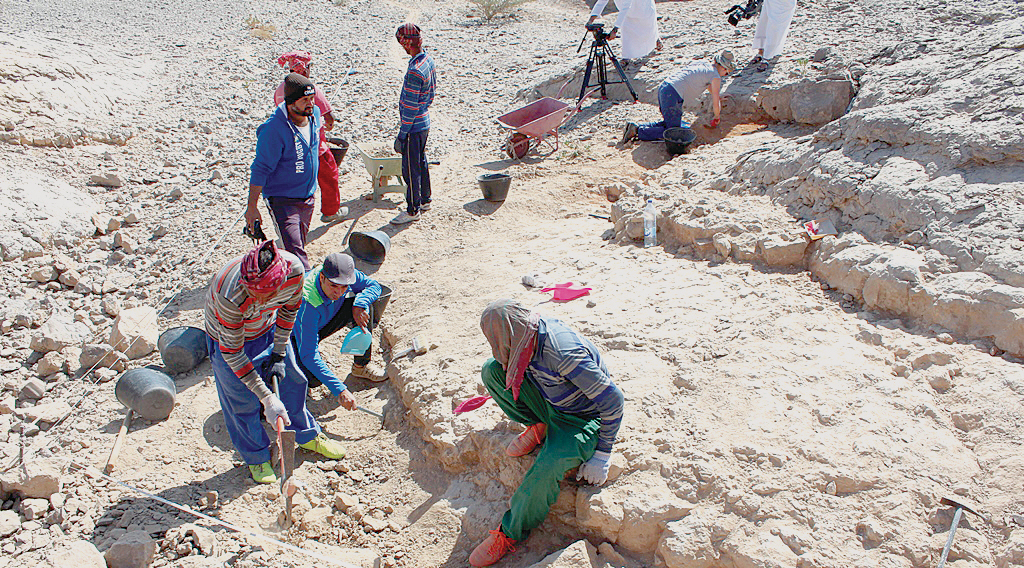

More than 3,000 copper arrowheads were discovered at a site at Mudhmar East, in the wilayat of Adam (Al Dakhiliyah Governorate). The discoveries, made by the Sultanate’s Ministry of Heritage and Culture & Sorbonne University of France, also include snake models of different shapes, pottery, and some copper and bronze weapons. The history of the antiquities dates back to the first millennium BC. The archaeological survey is being conducted with a view to learning about the economic, social and political patterns of societies that lived in Oman in the Neolithic, Bronze and Iron ages.
The techniques of sculpting in the snake models show the development of arts at that time.
The Mudhmar site has four buildings, whose excavation began in 2015. Located at the edge of a mountain, the site gives a wide view of the desert. It’s a strategic position at the passageway of Wadi Halfayn.
Building 1 is the biggest structure at the site. It measures 15m x 8m. It has seven distinct spaces, including five rooms. Two rooms, including a courtyard, seem to be a part of the entrance complex.
Three stairs lead to a corridor. On each side is a small square room. A stone threshold and a wooden door lead to the main room, which includes a series of stone pillars. It could have been a meeting room.

A small room full of stones is located on the south-western corner. Going by its form and size, the building may not have been a house. The main room could have been a meeting place.
It is highly probable the building had a “ritual/cultic function”, especially because of the unique bronze objects found inside, and from the latest discoveries in Building 2, which include copper snakes, censers (containers for burning incense), lamps and burnt animal bones.
The walls are made of different materials and the foundation from planktonic limestone from Jabal Mudhmar.
The elevation is made of russet sandstone and the upper part of the elevation from mudbricks.
The foundation was found buried, while the elevation was covered by a coating, which is silty and of white and yellowish colour with vegetal inclusions whose imprints were clearly visible. Its thickness varies from 3 cm to 12 cm. Walls, stairs, the threshold and the soil in the main room had the same coating.
Discoveries are rare and very important, because they are unmatched in the region, making it difficult to compare, analyse and interpret, but they can be identified by comparing them with other discoveries at the same location. These excavations will contribute to what has been found in the previous archaeological sites in providing a clear picture of the tools used by humans at that time. Future excavations in the building will reveal more information about the nature of this site, uses of these buildings and the lifestyle of people at this site.
AMAL AL RIYAMI
Oman Observer is now on the WhatsApp channel. Click here



